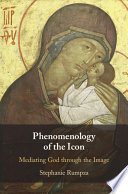

Most ebook files are in PDF format, so you can easily read them using various software such as Foxit Reader or directly on the Google Chrome browser.
Some ebook files are released by publishers in other formats such as .awz, .mobi, .epub, .fb2, etc. You may need to install specific software to read these formats on mobile/PC, such as Calibre.
Please read the tutorial at this link: https://ebookbell.com/faq
We offer FREE conversion to the popular formats you request; however, this may take some time. Therefore, right after payment, please email us, and we will try to provide the service as quickly as possible.
For some exceptional file formats or broken links (if any), please refrain from opening any disputes. Instead, email us first, and we will try to assist within a maximum of 6 hours.
EbookBell Team

5.0
88 reviewsHow can something finite mediate an infinite God? Weaving patristics, theology, art history, aesthetics, and religious practice with the hermeneutic phenomenology of Hans-George Gadamer and Jean-Luc Marion, Stephanie Rumpza proposes a new answer to this paradox by offering a fresh and original approach to the Byzantine icon. She demonstrates the power and relevance of the phenomenological method to integrate hermeneutic aesthetics and divine transcendence, notably how the material and visual dimensions of the icon are illuminated by traditional practices of prayer. Rumpza's study targets a problem that is a major fault line in the continental philosophy of religion – the integrity of finite beings I relation to a God that transcends them. For philosophers, her book demonstrates the relevance of a cherished religious practice of Eastern Christianity. For art historians, she proposes a novel philosophical paradigm for understanding the icon as it is approached in practice.